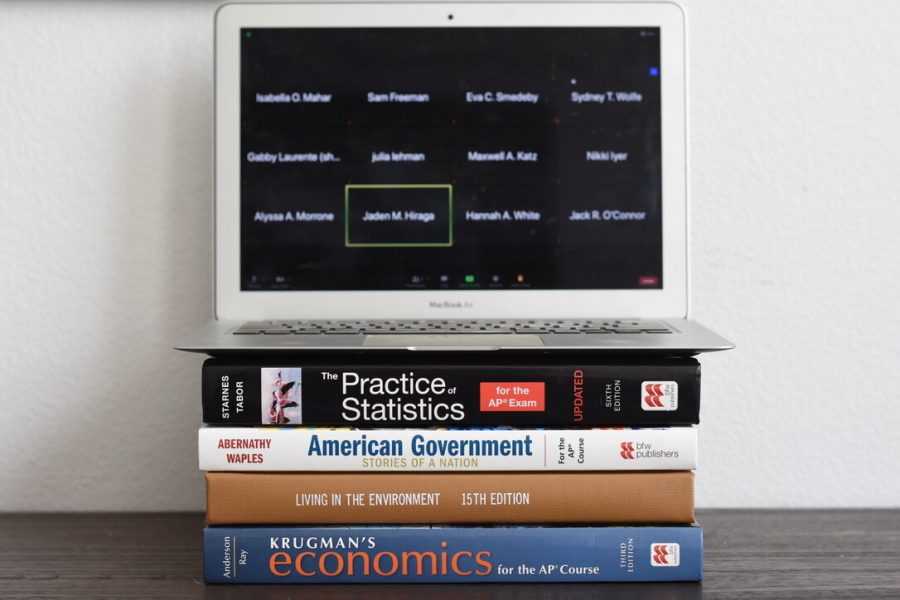Students Are Hitting the Pandemic Wall
Online learning is challenging for many students. The workload can be overwhelming, and it’s especially difficult to focus in zoom meetings for multiple hours.
March 11, 2021
Everyday, I wake up and log on to Zoom at 6:54 AM to begin my first class of the day. After attending my back-to-back Zoom meetings for eight consecutive hours, I take a break only to return to my computer for a long night of homework. I remain in this position and only leave my bedroom periodically. By the end of the night, my eyes are strained and my head hurts from focusing on my computer screen for extended periods of time. I know that rest is what I need, but my anxiety around school work keeps me up, creating an endless cycle of fatigue.
I know I am not the only student who feels this way. Students at SJHHS and across the nation are experiencing similar situations. Although school has always been a challenge, it now seems impossible to manage and succeed.
“It’s hard to find motivation to turn in the homework and show up to class everyday because it’s just so repetitive, and it feels like the same day over and over again. There have been some upsides to online learning but definitely downsides as well. Even though everything is online, I feel the same amount of stress towards school as I did when everything was normal… maybe even more stressed. And I just feel tired all the time. Just physically, mentally, and emotionally tired,” said an anonymous student.
In a network series produced by the TODAY show, Savannah Guthrie speaks with students about their experiences with online learning during the pandemic. She found that 56% of students are more stressed now and 41% say their effort and learning has decreased.
“[They] are listening to lectures eight hours a day [online] and then have a pile of homework, which is also often on the computer, so it’s hard to stay focused—even for the best students. A lot of them said they felt like they were procrastinating. They wanted to get away from their room and their computer after school, but then, they would delay their homework until late at night, and they’d be up all night,” said Guthrie, a co-anchor at the TODAY show.
In a traditional school year, the workload is a lot, especially in AP and Honors classes. But the workload is unreasonable in the online learning environment, and students are beginning to reach their limit.
“Across time zones, age groups and socioeconomic lines, young people appear to be hitting a breaking point that developmental psychologists are calling the ‘pandemic wall,’” said CNN reporter Matt Villano.
Students are finding it increasingly difficult to focus in school, and this is, in part, due to something that Stanford calls “zoom fatigue.” Having multiple back-to-back zoom meetings reduces physical mobility, increases social anxiety, and produces cognitive overload. “Zoom fatigue” makes it difficult for students to concentrate and absorb information.
In addition, there are other factors that make it difficult to stay focused during distance learning. This includes the inconsistency in due dates. Assignments are uploaded randomly throughout the day (including weekends), which makes it hard for students to plan their schedules to manage the substantial workload.
There is also a limited distinction between classwork and homework. Many teachers often give students time in class to complete assignments, which aren’t necessarily considered classwork or homework. It can lead teachers to assign more work than was intended.
Beyond coping with the stress of school, students are also dealing with other forms of anxiety, including various mental health issues. It’s important to remember that we are all trying to survive a global pandemic that has negatively impacted each of our lives. Students are also experiencing additional challenges, including relationship troubles, financial issues, health problems, etc.
The way schools are currently operating is illogical and needs to be changed. The system needs to be reformed to help students learn more effectively and remain healthy during a difficult time.



